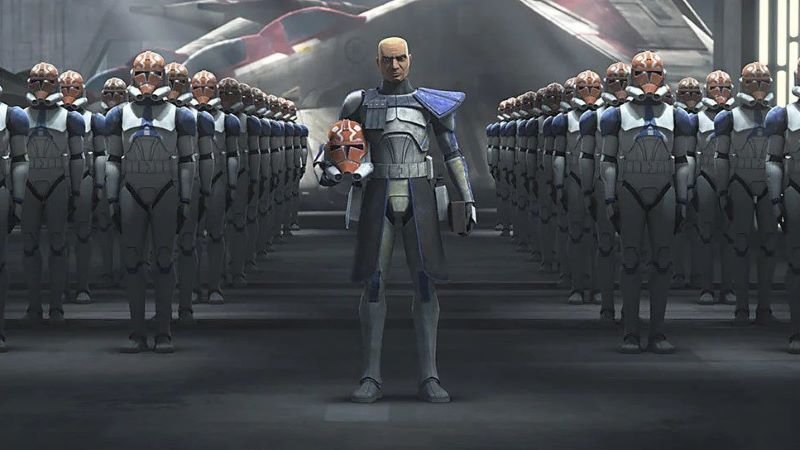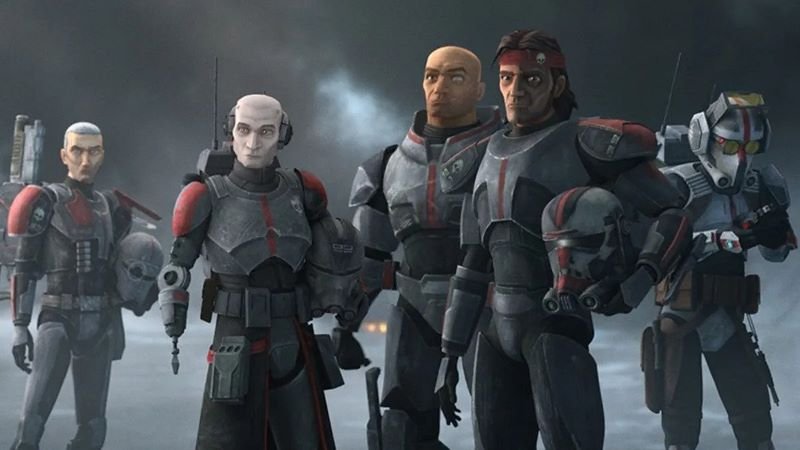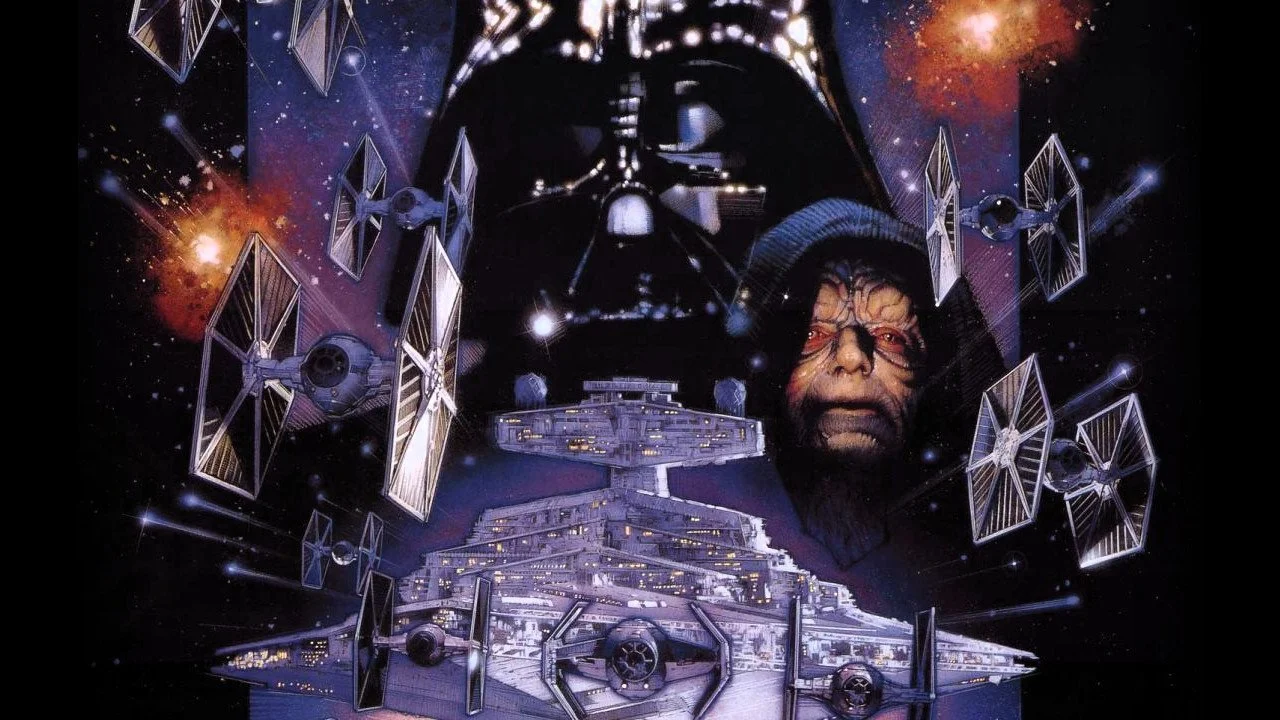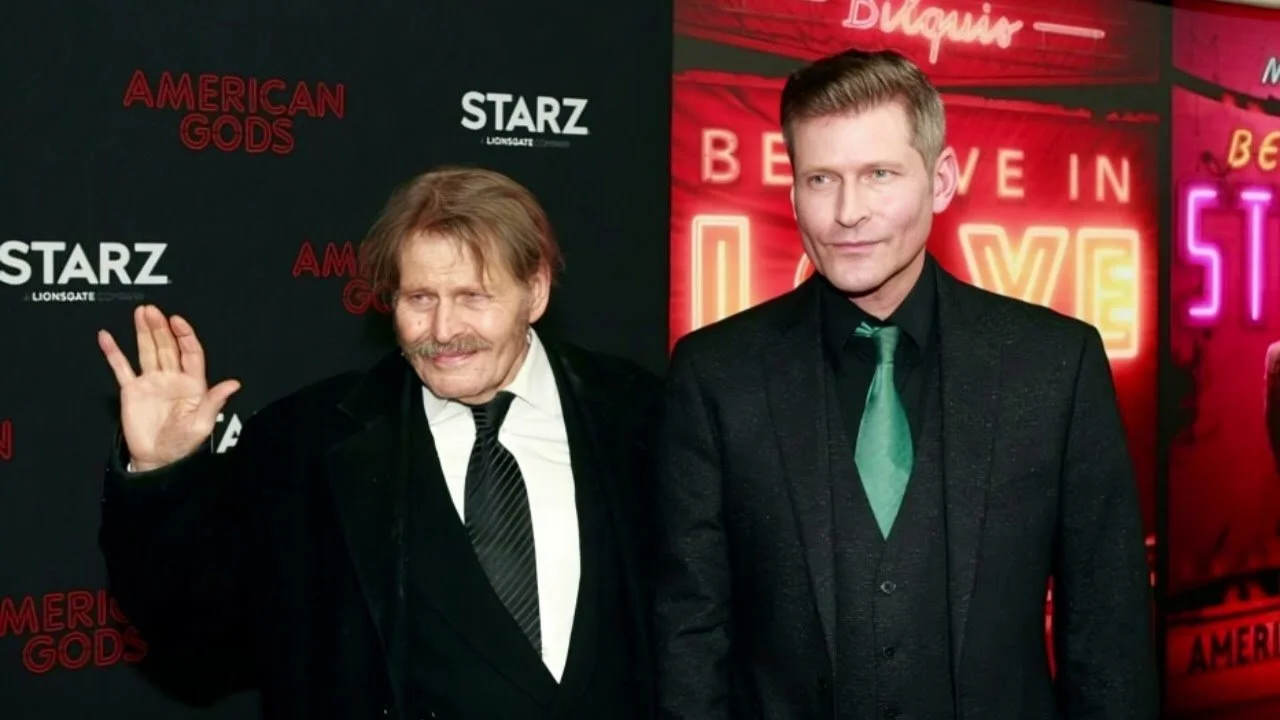'The Clone Wars' And The Importance Of Individuality In Life
Image Source: Gamesradar
The Clone Wars animated series premiered in the United States on October 3rd, 2008. It once again brought Anakin, Obi-Wan, Yoda, and several other characters from the films to the small screen. It also introduced new characters like Ahsoka along with the rest of the clone army. Even though the public had already seen Commander Cody execute Order 66 in Revenge of the Sith, most of the troopers that we have come to love were still a mystery. The Clone Wars animated series served as a bridge between Attack of the Clones and Revenge of the Sith.
The focus turned to the war itself and the white-armored, Kamino-grown clone troopers and their specificities. The show excelled in one important aspect: giving different voices (in a figurative way, of course) and personalities to them. They weren’t simple living copies of the bounty hunter Jango Fett but individuals with their own interests and motivations, moved by distinct perceptions of the war. The series started off with this idea being told directly to us. In Season 1, Episode 1, Lieutenant Thire told Yoda that it wouldn’t matter if they removed their helmets because they were all the same. To his surprise, Yoda responded, “Deceive you, eyes can. In the Force, very different each one of you are.” Yoda’s words set the tone for how the clone troopers would be portrayed in the series. The clone troopers who exhibited independent thinking would make a big impact on the events to come.
RELATED:
Captain Rex
Image Source: StarWars.com
One clone that stood out among several others was Captain Rex. He started out as captain for the majority of the series but was later promoted to commander when the Grand Army of the Republic needed a commanding officer for the siege of Mandalore. Rex instantly became a fan-favorite as he played an integral part in the Clone Wars.
At the beginning of the series, he was the epitome of a perfect soldier. He was brave and strong and followed orders without questioning them. Of course, that did not stay the same. Rex’s personal arc during the war was beautiful to watch. The Umbara arc (Season 4, Episodes 7- 10), which in my opinion, was one the best in the series, depicted his transformation.
Under the command of the corrupt Jedi Pong Krell, Rex had to adapt from the easy-going Anakin Skywalker to a new Machiavellian general. The 501st (along with the 212th, as we would find out later in the arc) was essentially used as cannon fodder in the siege. Rex faced a tough dilemma. Obey or not obey? He ultimately decided not to follow Krell’s suicidal orders anymore. If Rex had not disobeyed Krell, the 501st and the 212th would have faced great losses.
Like many others, what happened on Umbara changed Rex. He would start questioning his existence and what he and his brothers meant to the Republic. When the time came to cut ties after Order 66, he would choose the right path.
Domino Squad
Image Source: StarWars.com
The quirky Domino Squad (Droidbait, Cutup, Hevy, Echo, and Fives) caught the viewer’s attention when they first appeared in the series. The “Clone Cadets” episode (Season 3, Episode 1) showed that they were special when they were able to work together to come up with a creative solution against impossible odds to pass the Citadel Challenge.
However, the good would die young. Only Fives and Echo survived the Separatist attack on the Rishi moon outpost. Fives would be killed when trying to expose the truth about the inhibitor chip in the clones’ heads. It was a sad end for someone who had been thinking for himself since the beginning. Like Rex, he was changed by Umbara. He was so close to the truth that would set his brothers free. Fives’ efforts would help Rex discover the truth about the inhibitor chip, allowing him to warn Ahsoka as Order 66 was executed.
The Bad Batch
Image Source: La Nación
Clone Force 99, or The Bad Batch, was different from anything that the Kaminoans had ever created. Even though they were probably considered “defective” by the cloners, their genetic mutations were considered “desirable” as they gave them special abilities. Named after Clone 99, a malformed clone of Jango Fett, the group originally comprised Hunter, Wrecker, Tech, and Crosshair. Hunter had super-developed senses that could detect electromagnetic fields along with excellent hand-to-hand combat skills. Wrecker had immense physical strength and could cause an incredible amount of damage. Crosshair never missed any shots and was the perfect marksman for the team. Tech was an expert slicer and everything technical. Echo would join them later on, close to the end of the war, bringing ARC trooper experience to the team along with his cybernetic enhancements.
The Bad Batch was part of the Grand Army of the Republic, but never really part of it. They looked different and did not get along well with other clone troopers. They played by their own rules and operated independently. Their unique abilities made them perfect for dangerous missions that other squads, even Clone Commandos, could not accomplish. Their independent thinking would help them see the injustice during the fall of the Republic and the Rise of the Empire.
These three cases showed us something important. A herd-like way of seeing the world never gets us anywhere. History taught us that the great minds of the world thought in unique ways. This is what brought mankind several of its most important discoveries and moments. Rex, the Domino Squad, and The Bad Batch are prime examples that it is best to do what we think is right even if it goes against what others think. It is good to think beyond the general consensus because we go through the barrier that separates the individual from the collective.
READ NEXT:
Source(s): IMDb
















